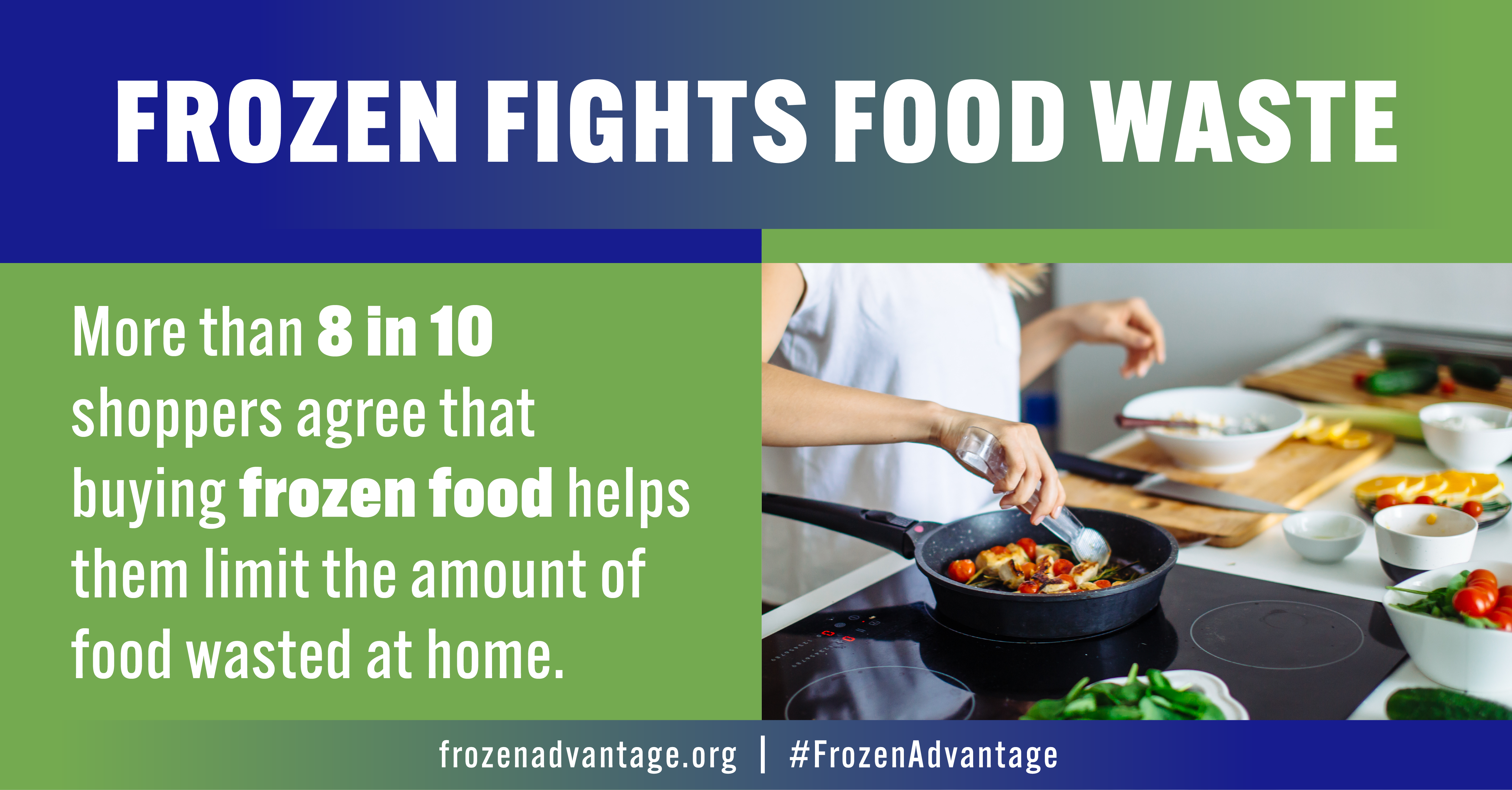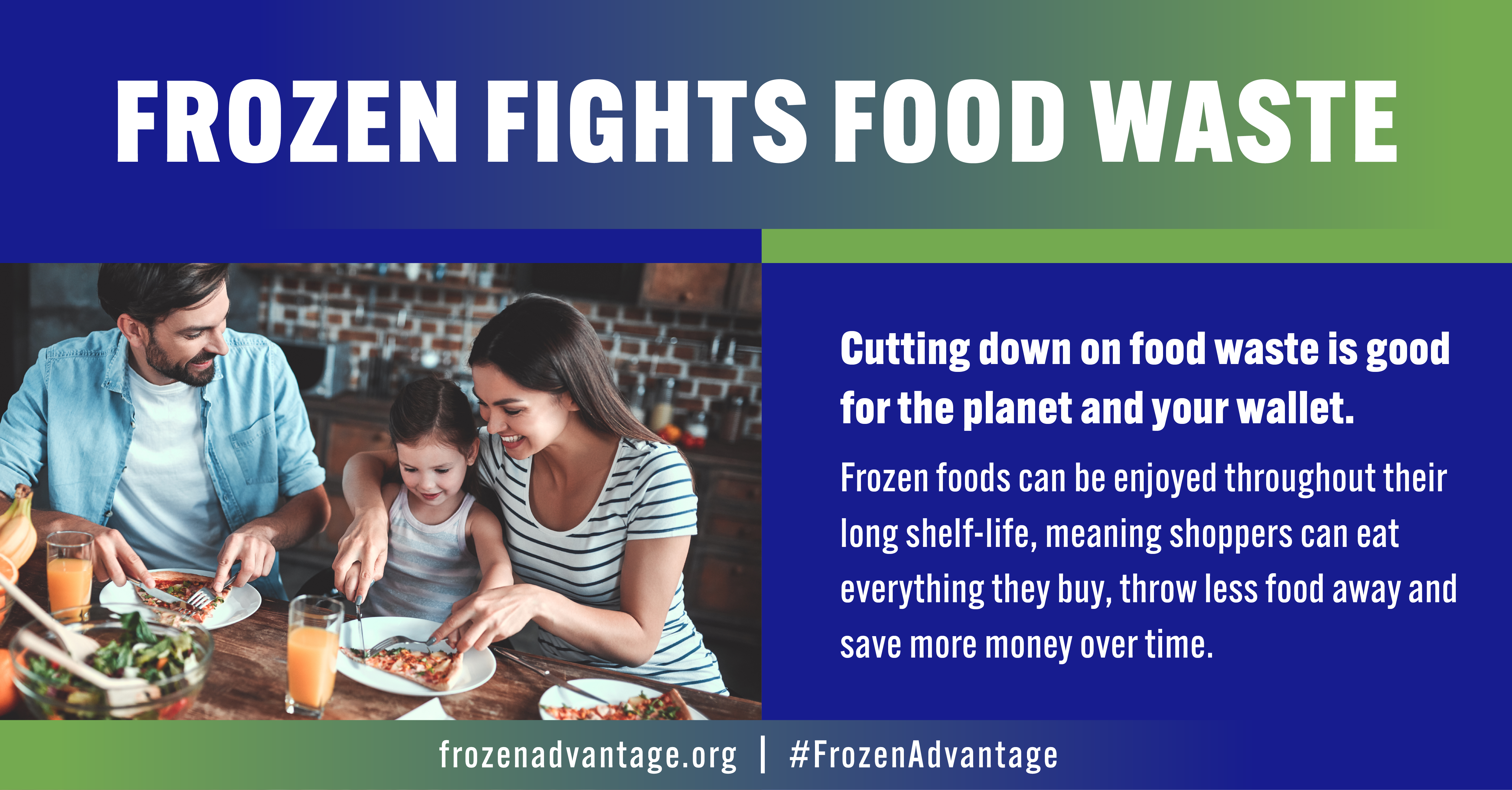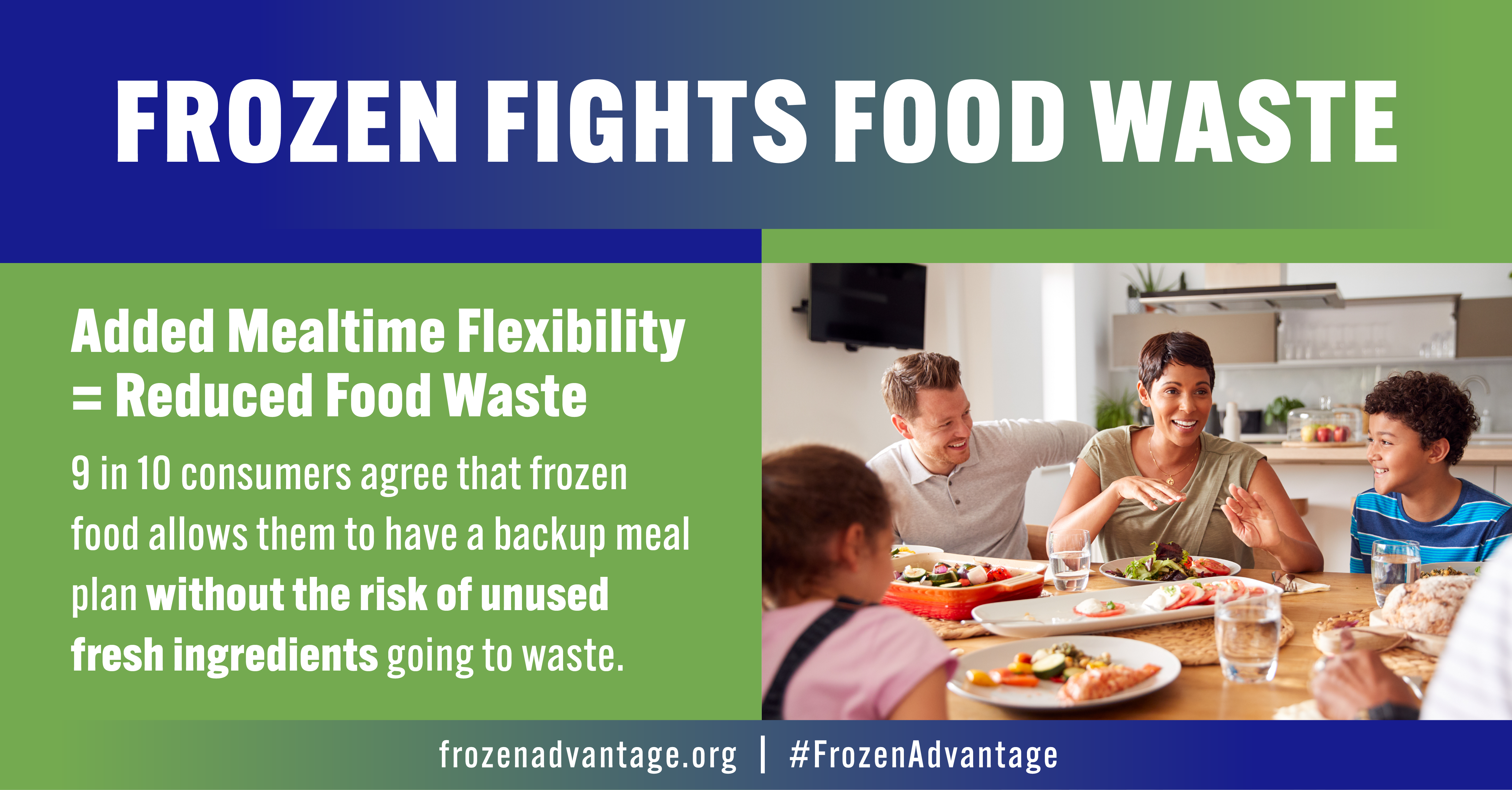Advantage
Less Waste
Nearly 40% of all food in the United States goes uneaten, reaching a value of $444 million. Per person, this equates to almost 550 pounds of extra food a year. Food waste doesn’t just have a financial cost, it also means additional landfill use and greenhouse gas (GHG) emissions that impact the environment. Despite this waste, 33.8 million Americans still live in food-insecure households.
Freezing is a food waste solution. It allows for a longer shelf life for produce and pre-portioned meals help reduce leftovers that go to waste. Consumers report that they turn to frozen food to help reduce their waste and save money, and having frozen meal ingredients on hand helps to have more food in the house without risk of spoilage.
The data backs up what many consumers say. A 2023 literature review conducted by Cornell University found that, in general, frozen food is wasted less frequently than its fresh counterparts at retail stores and in households. Some of the top reasons consumers report throwing out food were spoilage and excess leftovers – both of which frozen food can help address.
[1] https://refed.org/articles/refed-releases-new-food-waste-estimates-and-calls-for-increased-action-by-food-system/




